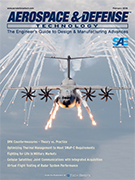Event
Attend - Innovations in Mobility: Aerospace Digital Summit
2024-04-30
Innovations in Mobility: Aerospace Digital Summitaerospace mobility leaders convene leverage cutting-edge technology, design, develop safety measures, integrate current regulations, suggest future policies, expand markets, diversify revenue streams.








